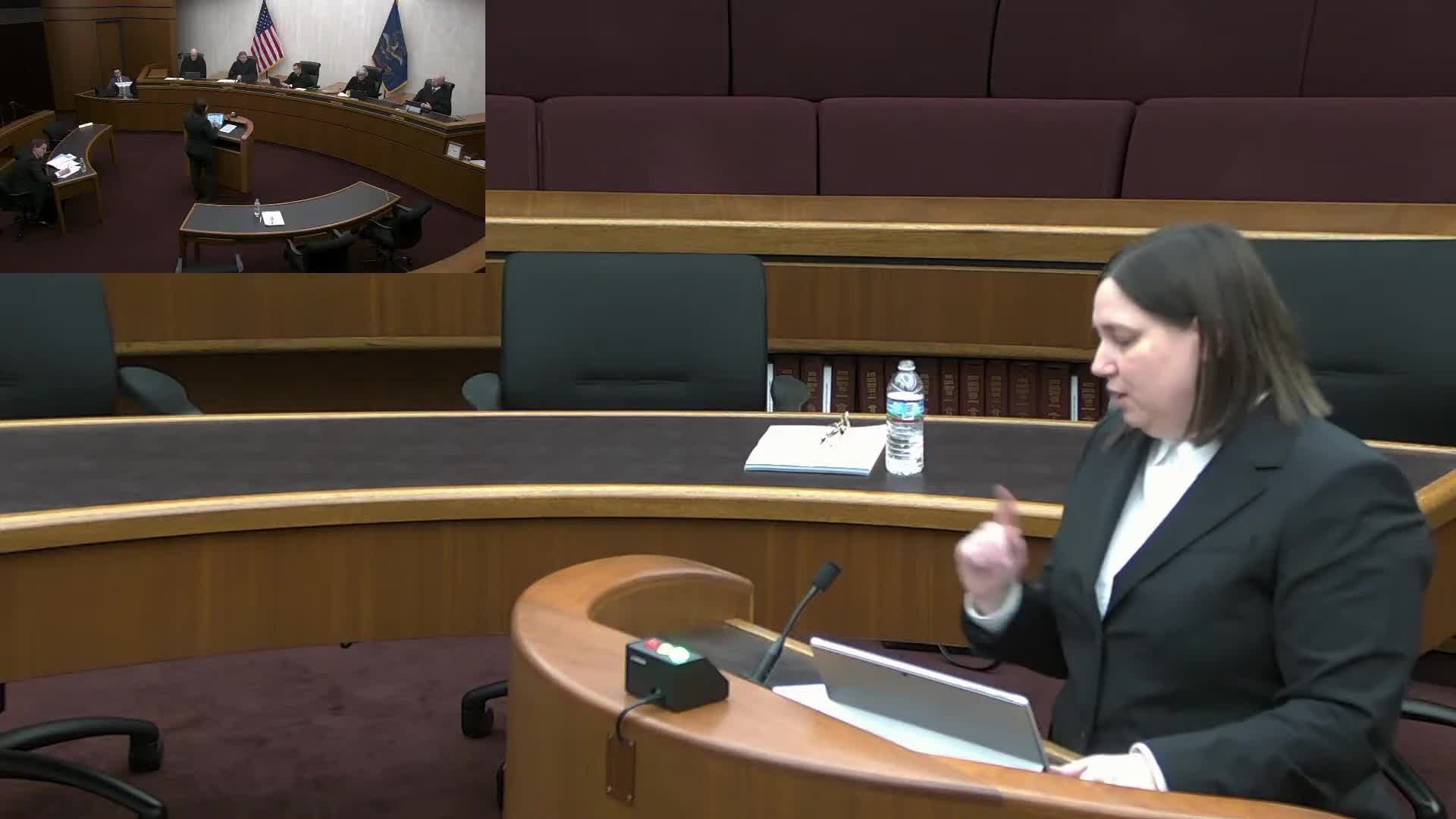Court Examines Evidence on Firearm's Operability in Henderson Case
January 11, 2025 | Supreme Court , State Agencies, Organizations, Executive, North Dakota
This article was created by AI summarizing key points discussed. AI makes mistakes, so for full details and context, please refer to the video of the full meeting. Please report any errors so we can fix them. Report an error »

In a recent session of the North Dakota Supreme Court, the case of State v. Henderson raised significant questions regarding the evidence required to prove unlawful possession of a firearm. The discussions centered on whether the firearm in question was operable, a crucial factor in determining the legality of the possession.
During the proceedings, it was highlighted that an officer had removed ammunition from the firearm but did not conduct a test firing to confirm its operability. The defense argued that merely observing the firearm and believing it to be functional was insufficient evidence. They emphasized that the law requires proof that the firearm is capable of discharging a projectile, not just that it appears to be operational.
The court examined the circumstances under which the firearm was found, noting that it was located in a locked basement room, separate from the defendant, Mr. Henderson. The defense pointed out that there was no indication that Henderson had knowledge of the firearm's presence, as it could have belonged to his deceased father, who was known to own firearms.
The discussion also touched on the credibility of the officer's assessment. While the officer had experience with firearms, the defense argued that simply clearing ammunition did not equate to confirming the weapon's functionality. The court considered whether the officer's visual inspection and handling of the firearm provided a reasonable basis to conclude it was operable.
As the justices deliberated, they referenced previous cases to clarify the legal standards for proving a firearm's operability. The outcome of this case could have implications for how evidence is evaluated in future firearm possession cases, particularly regarding the burden of proof required to establish that a weapon is indeed functional.
The court's decision will not only impact Mr. Henderson's case but also set a precedent for similar cases in North Dakota, highlighting the importance of clear and convincing evidence in matters of firearm possession. As the community awaits the ruling, the discussions underscore the ongoing challenges in balancing legal standards with the realities of law enforcement practices.
During the proceedings, it was highlighted that an officer had removed ammunition from the firearm but did not conduct a test firing to confirm its operability. The defense argued that merely observing the firearm and believing it to be functional was insufficient evidence. They emphasized that the law requires proof that the firearm is capable of discharging a projectile, not just that it appears to be operational.
The court examined the circumstances under which the firearm was found, noting that it was located in a locked basement room, separate from the defendant, Mr. Henderson. The defense pointed out that there was no indication that Henderson had knowledge of the firearm's presence, as it could have belonged to his deceased father, who was known to own firearms.
The discussion also touched on the credibility of the officer's assessment. While the officer had experience with firearms, the defense argued that simply clearing ammunition did not equate to confirming the weapon's functionality. The court considered whether the officer's visual inspection and handling of the firearm provided a reasonable basis to conclude it was operable.
As the justices deliberated, they referenced previous cases to clarify the legal standards for proving a firearm's operability. The outcome of this case could have implications for how evidence is evaluated in future firearm possession cases, particularly regarding the burden of proof required to establish that a weapon is indeed functional.
The court's decision will not only impact Mr. Henderson's case but also set a precedent for similar cases in North Dakota, highlighting the importance of clear and convincing evidence in matters of firearm possession. As the community awaits the ruling, the discussions underscore the ongoing challenges in balancing legal standards with the realities of law enforcement practices.
View full meeting
This article is based on a recent meeting—watch the full video and explore the complete transcript for deeper insights into the discussion.
View full meeting
